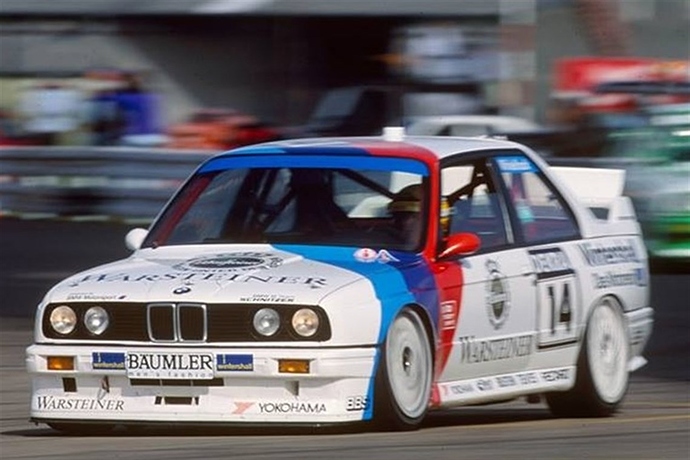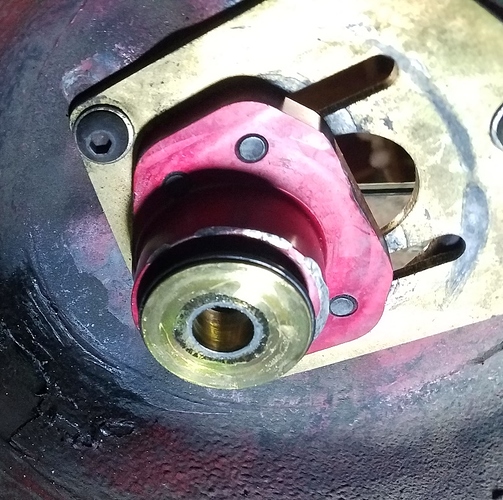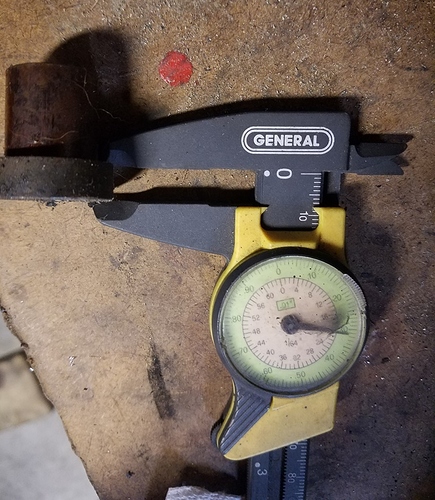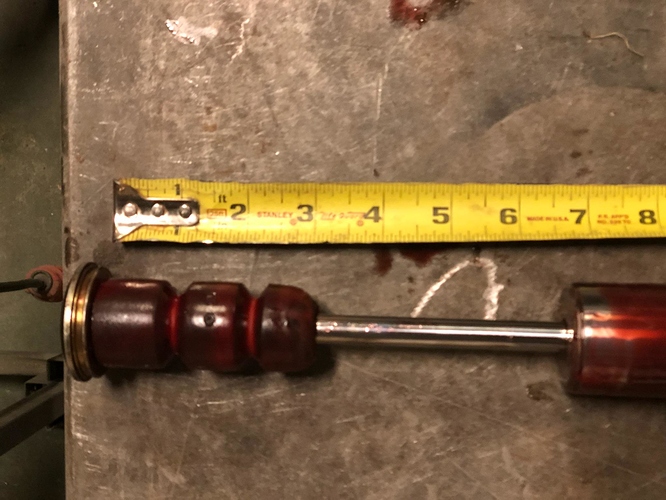Great thread, Nick. Thanks for all this helpful analysis.
Bilstien Shock Discussion
DTM cars had completely different suspension, but most race M3’s have shorter shocks and roll center spacers to correct geometry when significantly lowered.
Well, I have old springs and I’m at Sears Point on May 6. I’ll see if I can rig a GoPro to look at the right front so that when I hit the two bumps in the esses (the T8/8a section) we can see what a hard shock does. Then I’m at ShushyoselfFloormat (Laguna Seca, 92db) on June 4 and we can see what happens during the T6 compression.
Pls put a zip tie on your struts so we can ID peak compression under 10/10ths conditions.
I’ll try. Having said that, the test was done by the guy who swept the 3 races last weekend, so his 10/10ths is likely a lot more tenthy than mine.
So the general rule is really easy. You need at least 5 inches from the lowest part of the unibody to the road. With approximately 1/2 inch rake towards the rear. … there is quite a bit of wiggle room, some of the e30’s might need more than 6 inches. YMMV but the lowest possible is 5 inches.
These were custom mounting points other custom control arms with heim joints, not even close to stock. Tubular pieces made bespoke by engineers who were working on a per - track design parameter
Regarding your impressive efforts to corner balance the e30: its the last possible job I’d tackle in an e30. It’s almost pointless. There is little to no lap time improvement in an e30 by corner weighting.
I know a lot of hard asses are clenched right now, but it’s the truth. The weight problem in an e30 is started by removing the interior. Once that happens you need to re-engineer the interior before even considering the weight jacking shit.
And if you’re prioritizing, put it last.
I suppose (shrugs shoulders). I’m not trying much to be faster. Assigning importance to podium finishes would be a sure-fire road to disappointment.
The bumptravel issue had the potential to cause some turmoil, so that needed to be figured out immediately. Fixing my bumptravel problem forced me to raise one corner more than the other, so cornerweighting became the next project. I like projects. Besides, writing up something encourages everyone to figure out that task on their own car.
When I started this I could barely change the oil. The body of info here at the forum has guidance on a lot of maintenance tasks and mechanical issues. That helps everyone avoid problems, and/or resolve problems w/o paying for a shop to do the work. The veterans owe that assistance to the people like me who would not have been able to afford to have a shop maintain my car.
The bump stop issues are absolutely imperative to address. It’s the most critical issue. Your goal should be to only encounter bump stops in the most margin cases, but control is only possible when you’re clearly off them. Also, at the same time the e30 just isn’t that effective when it’s too low. Caveat-there is also too high…
Sure, it behooves us to get off of the bumpstops, but we’ve spent the last 15yrs riding on them on likely every turn. I would argue that the most significant thing was the sudden realization that we were always too low, given that our springs were too weak to keep us off of the stops. Now we have stouter springs and adjustability to deal with it.
Re: corner balancing. You know who else said that? Skeen–probably our fastest guy. I believe it. It’s not a huge deal to corner balance the cars now so I did it, but it’s not something I worry about every race.
There are some misunderstandings here. The idea that the new springs make us worse off for bump travel is just wrong.
I just pulled apart one of my front corners to take some pics. The bottom line is that the bump travel of the struts is slightly better, ride height being equal, and due to the new springs being so much stiffer, we are in a far better situation than we were for keeping off the bumpstops. I understand that there are some folks that disagree. I would encourage them to pull apart their stuff and take measurements.
The first pic below shows the misalignment spacer shipped to GC camber plate owners. It is the piece that sets bump travel because it’s the piece that the strut shaft’s shoulders push up. All measurements of bumptravel and camber plates have to orient on the location in the camber plate that the strut shaft’s “shoulders” push on. That misalignment spacer sets the strut shaft “shoulders” 8mm below the lower surface of the camber plate.
The second pic is the cylindrical piece that used to be in the GC camber plate. It shoved down the old OEM spring hat, and also shoved down the shoulders of the strut shaft. Just like the misalighnment spacer, it’s 8mm. So the old GC solution shoved down our strut shaft 8mm + an additional 2mm thickness (yes, I measured it) of the OEM spring hat… Therefore the new location of the strut shaft gives us 2mm more bump travel then the old springs. Not less bump travel, more bump travel.
But here’s the big enchilada. The new front springs are 40-47% stiffer than the old springs, depending on who’s #'s for H&R Race you believe. Lets assume 40%. So 30mm of old bump travel would be the same as 42mm of bump travel now. So if your car is the same height as it used to be, due solely to the stouter springs, you are in a 40% better situation with the new springs.
The bottom line is that we are much better off than we were. This bump travel concern is simply new recognition of a 15yr old problem. Now we know that one of the reasons that our car was such a handful at 'the limit". We are now in a better situation because a) 40-47% stiffer front springs so the new springs require far less bump travel. b) The new springs bring adjustibility so we can lift the front a bit higher if we want, like the Aussies do, and c) our top hats are now compatible with conventional camber plates which will give us, I dunno, 15-20mm more bump travel if someone decides that “better” is not good enough.
Returning to this thread with new info, much of it contradicting what we (especially me) thought was true.
The other day Rich Bratton sent me a pic of the bumpstops inside of a Bilstein B8 strut insert. The bumpstops are ~3" of, I dunno, maybe polyurethane. The fact that the bumpstops are so tall is significant.
Lets assume that at full compression those 3" of bumpstops can squish down to 1". That’s jibes with my finding above when I attempted to fully compress a front corner and found 23mm of strut still above the gland nut.
Up above I ballparked our H&R spring available bump travel at 30mm. So imagine the insert’s bumpstops compressed from 3" to 1" at rest. 1" + 30mm is about 2 1/4". So at rest with H&R Race springs we already had our bump stops compressed by ~3/4". That would have had a huge impact on our effective spring rate. Because we didn’t just have 275lbs/in from the spring, we’d have had the sum of 275lbs/in + the spring rate of the bump stops squeezing down.
I did some poking around and it looks like 200lbs/in is a reasonable estimate for the spring rate of our B8 bumpstops. So our old front effective spring rate was ~515lbs/in (315+200) and our new front effective spring rate is ~725lbs/in (525+200).
Conclusions.
-
Our new front springs didn’t increase our effective front spring rate as much as we thought. 315 to 525lbs/in is a 67% increase. But when we take into account the bump stops the effective front spring rate increase was approx 515 to 725lbs/in. Only a 41% increase.
-
The fact that we never really get off of our bumpstops has to be beating the shit out of our front ends. We’ve certainly seen torn sheetmetal around the strut towers.
-
Eventually we’re banging out our polyeurethane bump stops and turning them into soup. So after a while the additional effective spring rate goes away, our front end gets softer, but then we REALLY bash the shit out of our strut towers when we bottom out. That fits anyone’s experiences?
-
There’d been lots of talk about how much more fun the new springs are on fast sweepers, and how they make the slow guys (like me faster) and therefore tighten up groups. This is particularly evident at Roebling Road where midpackers are 1sec faster and back packers 2secs faster. But now that we understand(?) the bump travel limitation of the B8, some other advantages come to the fore.
a) You can raise your front up a bit and gain some bump travel. So it’s not “woohoo, I have stiffer springs.” It’s "woohoo, I finally have the height adjustibility that gets it off of the damned front bumpstops.
b) The narrow spring and no tophat creates a more level camber playing field. Because of tweaked frames, some people used to be able to get a lot more camber than others and that’s not fair.
Just for clarity, the problem is not that the B8 is a shitty strut insert. The problem is that the B8 is tall. It has to be because it’s designed for the relatively tall OEM strut housing, which was designed for OEM ride height. We’ve lowered our cars so the height of the strut housing causes bump travel issues. Had Carter, years ago, wanted to spec a more appropriate height strut insert, he would have had to tell everyone to either shorten your strut housings or buy aftermarket housings. Both of those ideas add cost, so it’s easy to understand why he’d be wary of that route.






